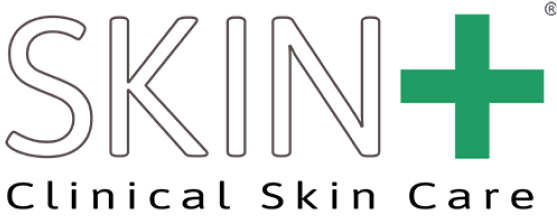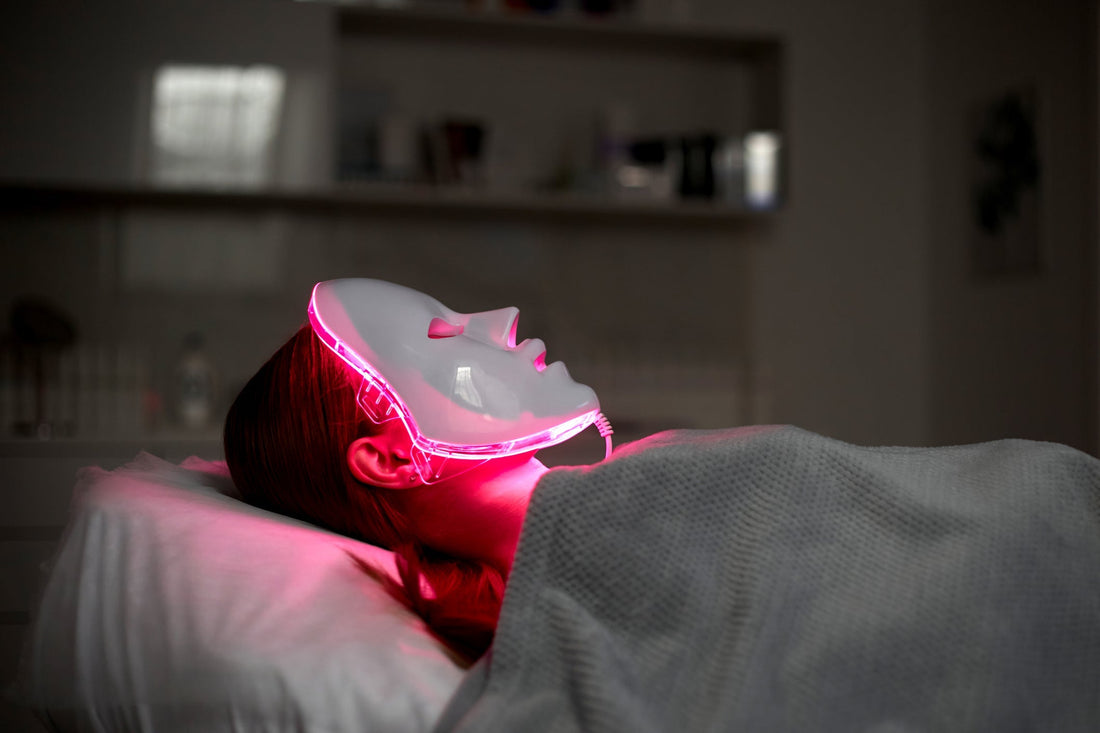If you’ve noticed buzz about red light therapy all over TikTok, Instagram, or your favorite beauty podcasts lately, you’re not alone. As an esthetician in Austin who specializes in acne and skincare, I get asked about red light therapy devices daily. So let’s talk—what’s legit, what’s hype, and how can this non-invasive treatment actually change your skin game (and possibly your whole vibe)?
This post is going to be comprehensive—so buckle up, because I’m going to cover:
-
What red light therapy is (and why it’s a thing now)
-
How low-level laser therapy and light-emitting diode tech work on your skin
-
Diving into clinical trials and clinical studies to see the scientific evidence
-
Understanding potential benefits: from fine lines to hair loss, wound healing to joint pain
-
Balancing at-home use versus in-office or professional treatment
-
Real talk about side effects, safety, and when to see a healthcare provider or board-certified dermatologist
-
Practical tips: what devices to get, at-home devices, red light therapy panels, time commitment, and ways to get the best results
Let's dig in.
So, What Is Red Light Therapy (And Why Should You Care)?
At its core, red light therapy, also called low-level light therapy, low-level laser therapy, or simply red‑light device treatment, uses specific wavelengths of light in the red and near-infrared wavelengths range—typically between 620–660 nm (visible red) and 780–850 nm (near-infrared). Whether in a handheld device, a mask, or a red light therapy panel, the goal is the same: deliver light energy deep into your human skin, stimulating cell function and improving skin and body issues without UV damage.
Why it’s safe: Unlike UV light, which can cause burns, DNA damage, and skin cancer, red and near-infrared light don’t carry those risks. In fact, one of the huge selling points is that this is a non-invasive treatment with minimal side effects, making it appealing in both home and professional settings.
Inside the Science: How Red Light Therapy Works
Let’s nerd out a bit:
Inside every one of your skin cells—and other body cells—you’ve got mitochondria, the little powerhouses making adenosine triphosphate (ATP), which fuels everything. Red and near‑infrared light hit mitochondrial chromophores and supercharge them, leading to:
-
👍 Increased energy production
-
👍 Improved cell proliferation and cell regeneration
-
👍 Enhanced collagen production and density
-
👍 Reduced oxidative stress
Studies show that red light raises the amount of blood flow and blood circulation, which helps with wound healing, reducing inflammation, and stimulating collagen production for smoother, firmer skin.
When you combine a review of studies involving clinical trials, you see consistent evidence of positive effects across skin and body issues.
Why It Works Wonders for Skin Rejuvenation (Especially Acne & Texture)
Calming Inflammation and Breakouts
Inflammation is a common thread in most skin conditions—acne, rosacea, eczema—you name it. Low-level red light reduces swelling and redness, helping pimples heal faster without drying out your skin like harsh creams do. Plus, in acne? Pairing red with blue light therapy (which zaps P. acnes bacteria) is a tag team that clinical trials have shown clears breakouts faster than either alone.
Fading Fine Lines & Firming Up
Thanks to boosted collagen production, red light smooths out skin texture, clears up fine lines, and increases collagen density in the dermis. That translates to a youthful appearance you can see and feel—no needles or lasers required.
Smoothing Skin Tone & Age Spots
The therapy helps normalize skin pigmentation, improving skin tone, reducing blotchiness, and alleviating age spots. Twice mentioned: red light = brighter, more even skin.
Healing Cuts, Burns & Scars
Multiple clinical studies show improved wound healing. In fact, it’s often used in dental drug administration clinics and photodynamic therapy for oral mucositis, and even in systemic care due to its ability to speed tissue recovery.
Pain Relief & Chronic Issues
People with joint pain, mild arthritis, or chronic pain often get relief thanks to red light’s anti-inflammatory and circulation-boosting effects. Yes, even cases of rheumatoid arthritis have seen benefits in smaller trials.
Beyond Skin – From Hair Loss to Body Recovery
Stimulating Hair Growth
Struggling with hair loss or androgenic alopecia? Red and near-infrared light stimulate hair follicles, and clinical trials support benefits in terms of hair growth and hair regrowth. It’s like a scalp selfie upgrade—thicker, healthier strands.
Healing & Tissue Repair
Beyond acne scars and surface cuts, red light speeds overall tissue repair—a huge bonus for injuries, post-surgical recovery, and sports medicine. Enhanced blood flow means faster, more efficient healing.
In-Office vs. At-Home Devices—What’s Right for You?
In-Office Treatments & Professional Treatment
-
Delivered via powerful medical devices in a dermatologist’s office or doctor’s office
-
Target deeper concerns like post-surgical scarring, stubborn pigmentation, or advanced aging
-
Often quicker results—but can be pricey and require insurance or out-of-pocket payment
At-Home Devices
-
Includes handheld devices, masks, and red light therapy panels
-
Perfect for hopping into a daily or nightly routine
-
Research shows regular at-home use can yield noticeable improvements in texture, tone, pigmentation, acne, and even fine lines
-
Safer, more convenient—and side effects are typically limited to mild warmth or temporary redness
Want the best of both worlds? Try alternating pro sessions with at-home use. You’ll likely see better results faster than sticking with just one approach.
Getting the Most Out of It – Best Practices
-
Look for FDA-cleared devices—especially those in the 630–660 nm red range or near-infrared light up to 850 nm.
-
Treat often—3–5x a week for 10–20 minutes is a solid starting point.
-
Cover enough surface area—a red light device panel or wide mask helps speed things up, but handheld wonders are great too.
-
Stay consistent—therapy accumulates over time as red light ignites cell proliferation and cumulative collagen build-up.
-
Combine smartly—for acne, combo with blue light therapy or your routine of cleansers and barrier-supporting moisturizers.
-
Keep skincare simple around sessions—a mild moisturizer post-session is usually all you need.
-
Track progress with photos and notes on skin tone, texture, breakouts, or discomfort.
Top 3 Red-Light Device Picks to Glow Like TikTok
Here’s my lineup of at-home devices that fit the bill, FDA-cleared, and ready to tackle various skin concerns like acne. Let’s glow!
Celluma Pro
-
Specs: 465 nm blue, 640 nm red, 880 nm near-infrared light, 5-10 watts, 10-40 Hz pulsing.
-
Why: My treatment room rockstar—blue smacks bacteria, red pumps skin elasticity, and near-infrared turbocharges the healing process. Medical-grade silicone—pro-level fun!
-
Best for: Full-face masks that zap acne and sun damage.
-
Snag it here !
Omnilux Clear
-
Specs: 415 nm blue, 633 nm red, 5-10 watts, steady light.
-
Why: Made for acne—blue’s a bacteria assassin, red fades appearance of fine lines. TikTok’s obsessed, and clinical trials say it’s legit.
-
Best for: At-home masks for specific skin concerns.
LighStim for Acne
-
Specs: 415 nm blue, 630 nm red, 5-10 watts, steady light.
-
Why: From dermatologists’ offices to your handheld device—blue kills acne, red heals skin cells. Glow-up central!
-
Best for: Regular use for impressive results.
Safety First—What to Know About Side Effects & Red Light Risks
Red light therapy is generally well-tolerated, but here’s where to pay attention:
-
Mild warmth or temporary redness right after an intense session—typically fades fast.
-
If you’re on photosensitizing meds or drug administration like Accutane, get advice from your healthcare provider or board-certified dermatologist first.
-
People with skin cancer, autoimmune conditions like lupus, or systemic diseases—again, consult your doctor. Red light is harmless for most, but check before you start.
-
Avoid expectations—and don’t use as a replacement for regular medical advice or proven treatment options for serious conditions.
Who Should Use (or Not Use) Red Light Therapy?
-
People with acne, redness, or fine lines seeking skin rejuvenation
-
Anyone wanting to fade age spots, improve uneven skin tone, or boost radiance
-
Folks with thinning hair or androgenic alopecia looking for hair regrowth
-
Those with minor wounds, cuts, or surgical recovery needs
-
People with joint pain, mild arthritis, or chronic pain requiring soothing support
-
Those on certain medications or with active skin cancer—call a healthcare provider first
-
Folks looking for instant, magic overnight improvements
-
Anyone using high-dose UV tan beds (big no)—this isn’t UV, it’s healing light!
Recap
Red light therapy is a legit, non-invasive treatment backed by scientific evidence and decades of clinical trials. It enhances cell function, accelerates wound healing, boosts collagen production, smooths fine lines, improves skin tone, encourages hair growth, and relieves joint pain without UV damage. It's versatile—at-home devices and professional treatments are both valid—and it’s safe for most folks.
If you fight adult acne, watch fine lines sprout, or your skin just needs a healthy reboot—or your hair looks like it's calling for backup—this could be your next best friend. And hey, no one’s turning away from a little glow and vitality, right?
The Research Rolodex – What Clinicians Have Found
-
2017 JID clinical study: Red + blue light wipe out acne faster than solo blue or red.
-
2014 Photomedicine and Laser Surgery: Participants saw smoother texture and better collagen production after consistent use.
-
2020 Dermatologic Therapy review: Strong improvements in skin tone, glow, and texture.
-
2016 Lasers in Medical Science: Faster wound healing post-surgery, supported by better blood circulation.
-
2009 Journal of Cosmetic and Laser Therapy: Reduced fine lines in long-term follow-up.
-
2019 Lasers in Surgery and Medicine: Effective hair growth in androgenic alopecia patients.
-
Oral mucositis research: Red light helped reduce pain in cancer treatment patients.
-
Joint pain / rheumatoid arthritis trials: Found meaningful reduction in discomfort and improved function.
If someone asks if "red light therapy work", you now have a parade of data-backed evidence you can drop.


